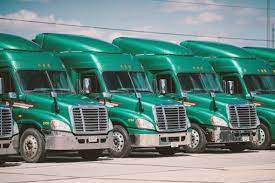warehousing and logistics are the backbone of any supply chain. They play a pivotal role in ensuring that products reach consumers efficiently and cost-effectively. In today’s fast-paced business environment, staying ahead in the world of warehousing and logistics requires innovative strategies and best practices. In this blog, we’ll explore key strategies for success in this critical sector.
1. Optimize Inventory Management
Efficient inventory management is the cornerstone of successful warehousing and logistics. Keep track of your stock levels, and ensure that you have the right products in the right quantities at the right time. Implement inventory control systems and forecasting tools to prevent overstocking and stockouts.
2. Embrace Technology
Technology is rapidly transforming the warehousing and logistics industry. Implementing warehouse management systems (WMS) and transportation management systems (TMS) can streamline operations, improve accuracy, and enhance visibility. Consider utilizing automation, robotics, and IoT devices to increase efficiency.
3. Location Matters
Choosing the right warehouse location is crucial. It can significantly impact transportation costs, delivery times, and customer satisfaction. Analyze your customer base and suppliers to determine the optimal location for your warehouse.
4. Prioritize Safety
Safety in the warehouse is non-negotiable. Implement strict safety protocols, provide training to your staff, and invest in safety equipment. A safe work environment not only protects your employees but also prevents costly accidents and delays.
5. Sustainable Practices
Consumers are increasingly conscious of environmental issues. Implement green warehousing practices, such as energy-efficient lighting, eco-friendly packaging, and sustainable transportation options. Sustainable practices not only benefit the planet but also your brand’s reputation.
6. E-commerce Logistics
The rise of e-commerce has created new challenges and opportunities in logistics. To succeed, you must develop effective e-commerce logistics strategies. This includes optimizing last-mile delivery, handling returns efficiently, and ensuring an exceptional online shopping experience for customers.
7. Supply Chain Resilience
Building a resilient supply chain is essential in a world filled with disruptions. Diversify your suppliers, create contingency plans, and develop a robust risk management strategy to ensure your operations can weather unexpected challenges.
8. Last-Mile Delivery Solutions
Last-mile delivery is often the most expensive and complex part of the logistics process. Investigate innovative solutions such as route optimization, drones, or autonomous delivery vehicles to reduce costs and enhance customer satisfaction.
9. Cold Chain Logistics
If you deal with perishable goods, cold chain logistics is vital. Ensure that your temperature-controlled storage and transportation systems are up to industry standards to prevent spoilage and maintain product quality.
10. Warehouse Security
Protecting your warehouse and its contents is crucial. Implement security measures like surveillance systems, access control, and security personnel to safeguard your assets from theft and vandalism.
In Conclusion
Warehousing and logistics are ever-evolving fields, and staying competitive requires adaptability and a commitment to continuous improvement. By optimizing inventory management, embracing technology, choosing the right location, prioritizing safety, and implementing sustainable practices, you can position your business for success in this vital industry.
Whether you’re a small e-commerce business or a large multinational corporation, these strategies will help you streamline your operations, reduce costs, and deliver products to your customers with efficiency and precision. Stay informed about industry trends, invest in staff training, and remain flexible to adapt to the ever-changing landscape of warehousing and logistics. Success in this field is not just about moving products; it’s about creating a seamless, efficient, and customer-focused experience.
